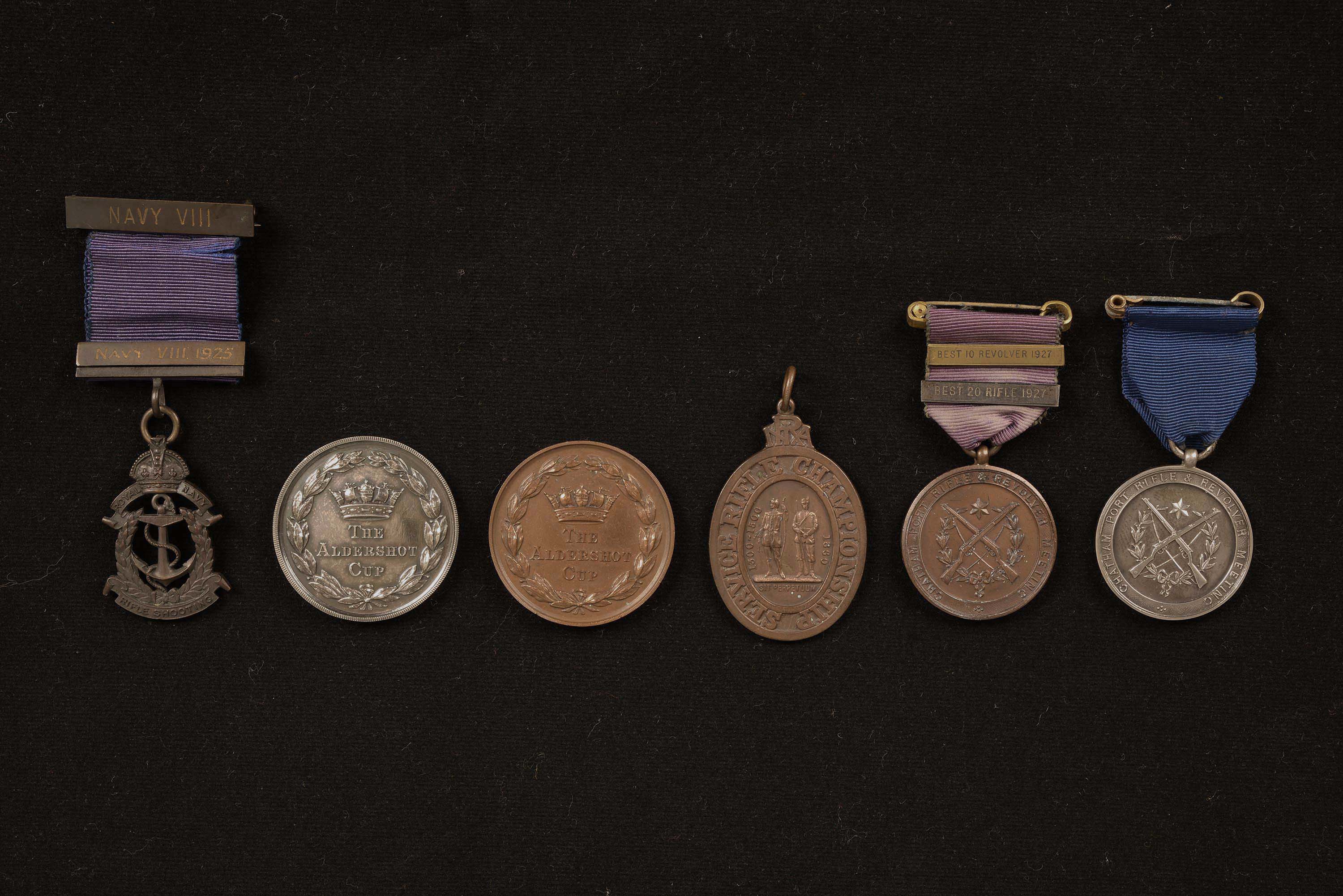

Display No. 8B
MELLING, Samuel
Samuel Melling enlisted in the Gunnery branch of the Royal Navy when he was sixteen years old in 1900. He completed his training in HMS Caledonia and HMS Minotaur. In June 1901 Melling joined the crew of HMS Jupiter as a Boy 1st Class. He remained with the ship for two years during which time he reached the rate of Able Seaman. He continued to serve in various ships and shore establishments including HMS Wildfire, HMS Sapphire and HMS Pembroke. In early 1907 Melling was promoted to Leading Seaman. He spent two years serving in the cruiser HMS Encounter, part of the Royal Navy Australian Squadron, before spending a year at the shore establishment HMS Pembroke back in England. He was promoted to Petty Officer in 1910. From August 1911 Melling served in the battleship HMS King Edward VII.
At the outbreak of the First World War, Melling was based at the shore establishment HMS Pembroke I but was soon posted to HMS Bacchante, a cruiser with the 7th Cruiser Squadron, responsible for patrolling waters in the North Sea. The ship later moved to the 12th Cruiser Squadron escorting ships between England and Gibraltar. HMS Bacchante was moved to Egypt in late January 1915 to reinforce defences of the Suez Canal. The ship later supported the land forces in the Gallipoli Campaign including during the Battles of Lone Pine and Chunuk Bair. In February 1916, Melling returned to England and spent the rest of the war based at HMS Pembroke I.
Melling was then assigned to HMS Gibraltar, a depot ship for two years. He undertook another two years at HMS Pembroke, during which he became a Commissioned Gunner in 1921. He served a further two and a half years with HMS Royal Sovereign, a battleship with the Atlantic Fleet. Melling returned to HMS Pembroke for another three years, during which time he was promoted to Chief Gunner. In 1928 Melling joined the crew of the newly commissioned HMS Kent, a heavy cruiser based at the China Station. He remained there for three years. He returned to HMS Pembroke in 1931 and served for the next nine years there. Melling served a total of forty years before being medically discharged in 1940.
Awarded medal(s)
Medal Description [Left to Right]:
The 1914-1915 Star
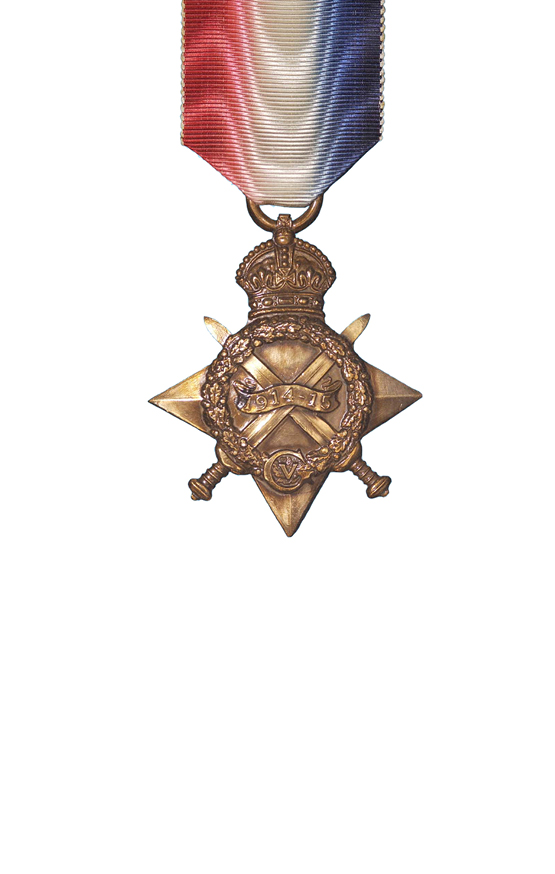
The 1914-15 Star was awarded to servicemen and servicewomen who served in the First World War between 5 August 1914 and 31 December 1915 in any “theatre of war”, provided they had not qualified for the 1914 Star. This included service at Gallipoli between 25 April 1915 and 31 December 1915, service in Egypt between 5 November 1914 and 31 December 1915, and service during the capture of German Samoa on 29 August 1914. Those eligible for the medal must have “served on the establishment of a unit in a theatre of war” during the relevant dates of operations in that area. The ribbon’s red, white and blue shaded and watered bands represent the flag of the United Kingdom.
The British War Medal
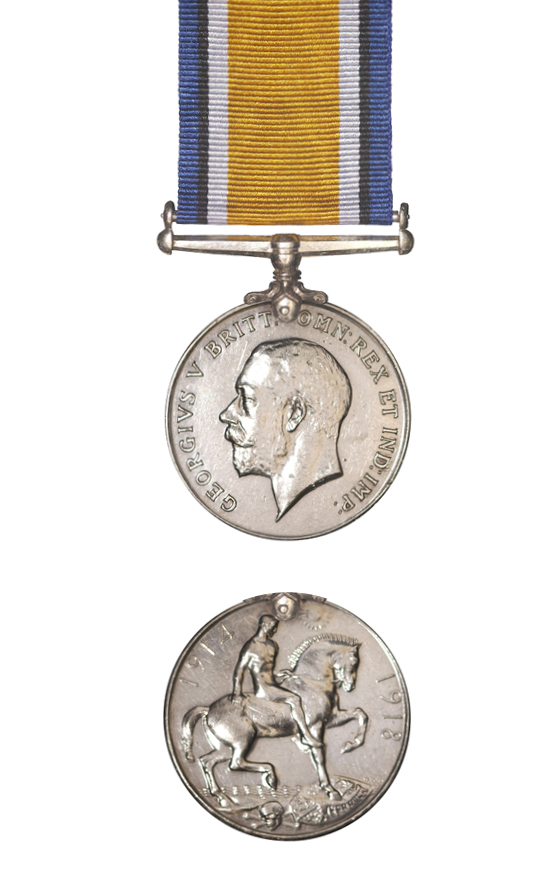
The British War Medal was instituted in 1919 to recognise the successful conclusion of the First World War (1914-1918). Its coverage was later extended to recognise service until 1920, recognising mine clearing operations at sea, and participation in operations in North and South Russia, the eastern Baltic, Siberia, the Black Sea and the Caspian Sea.
The Victory Medal
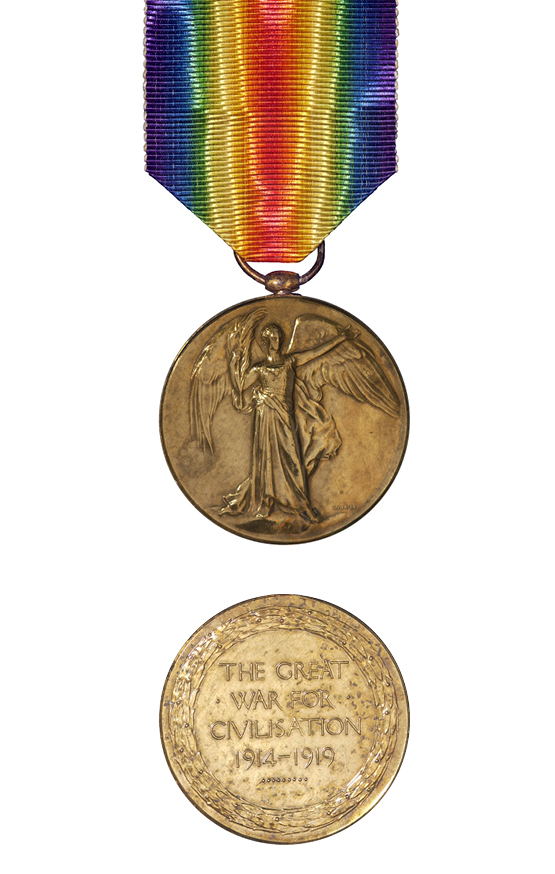
The Victory Medal was awarded in the First World War to all those who had already qualified for the 1914 Star or the 1914-15 Star, and to most persons who had already qualified for the British War Medal. The Victory Medal was awarded to all New Zealand troops serving overseas, except for those who arrived in Samoa after 30 August 1914 and those serving in Great Britain only. It has a unique double rainbow ribbon.
A bronze spray of oak leaves on the medal ribbon denotes that the recipient was Mentioned in Despatches during the period that the medal recognises. To be Mentioned in Despatches a member of the armed forces has had their name mentioned in an official report, written by a superior officer, and sent to a higher command. The report would describe the individual’s gallant or meritorious action in the face of the enemy.
Special interest medal(s)
Display No. 27C
Medal Description [Left to Right]:
Shooting Medal
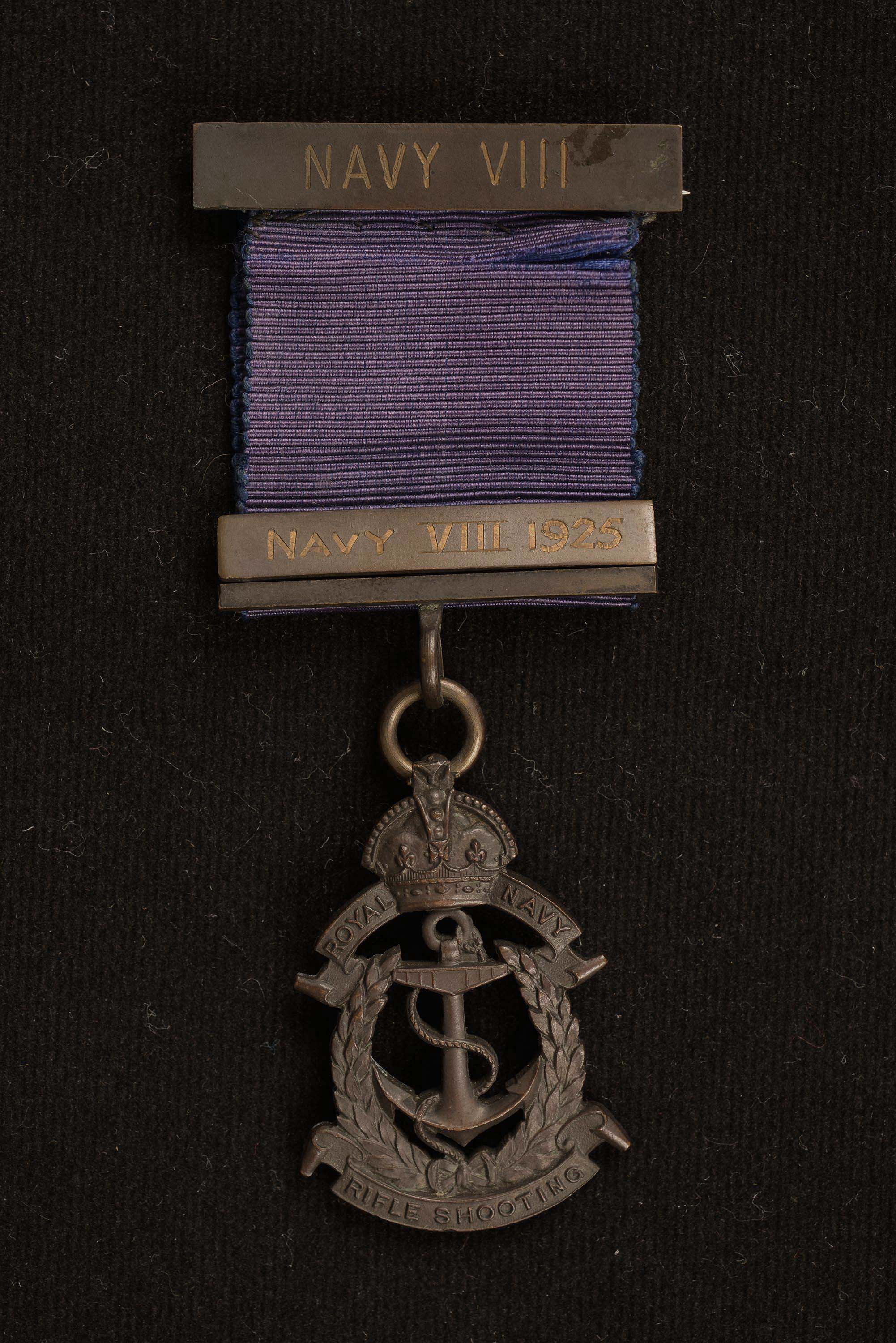
Royal Navy Rifle Shooting Team Medal from 1925.
Silver Shooting Medallion
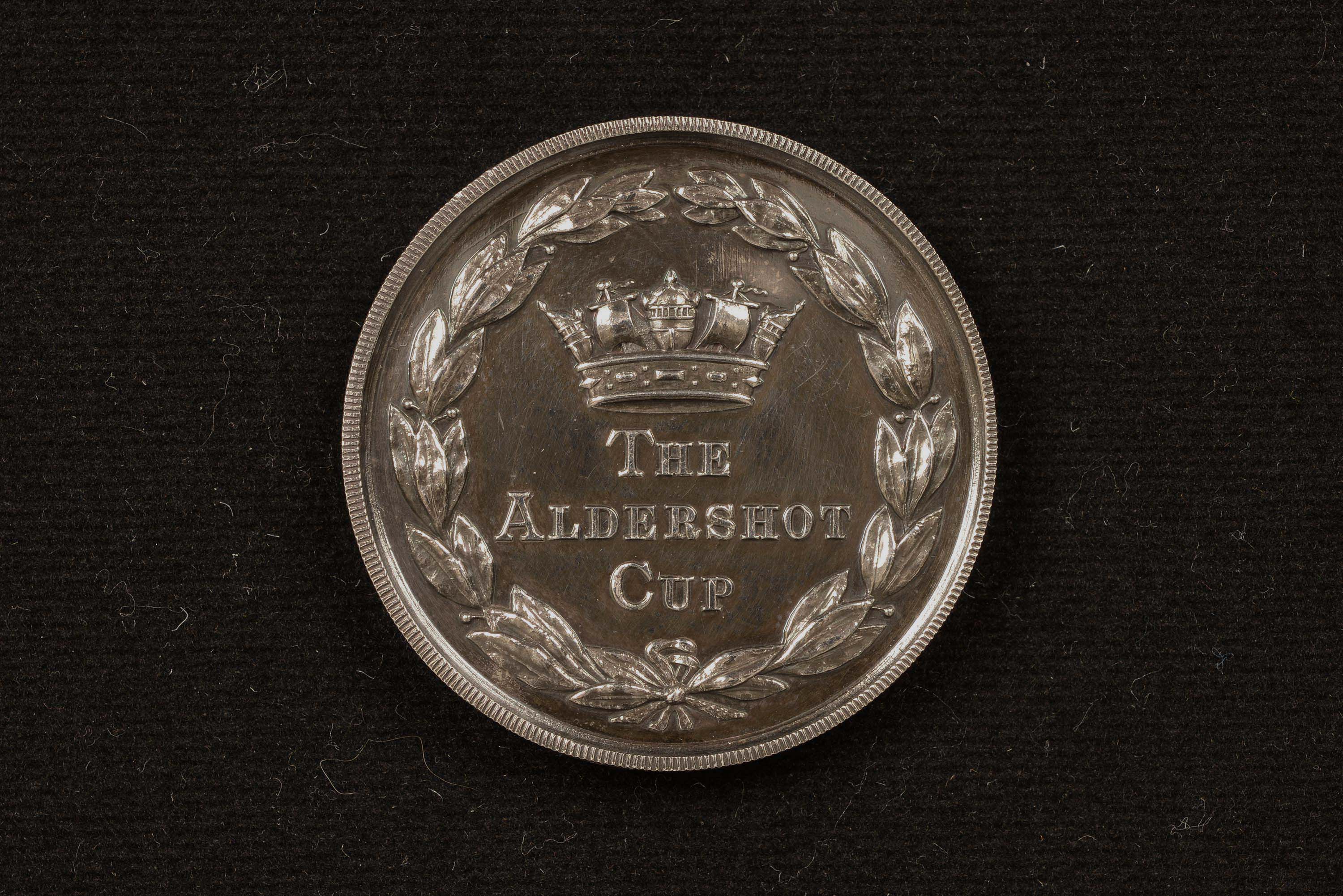
Silver Aldershot Cup Medallion. Aldershot was home of the British Army and it is likely that the recipient attended a shooting competition there.
Bronze Shooting Medallion

Bronze Aldershot Cup Medallion. Aldershot was home of the British Army and it is likely that the recipient attended a shooting competition there.
Bronze Rifle Medallion

Service Rifle Championship bronze medallion.
Bronze Shooting Medal
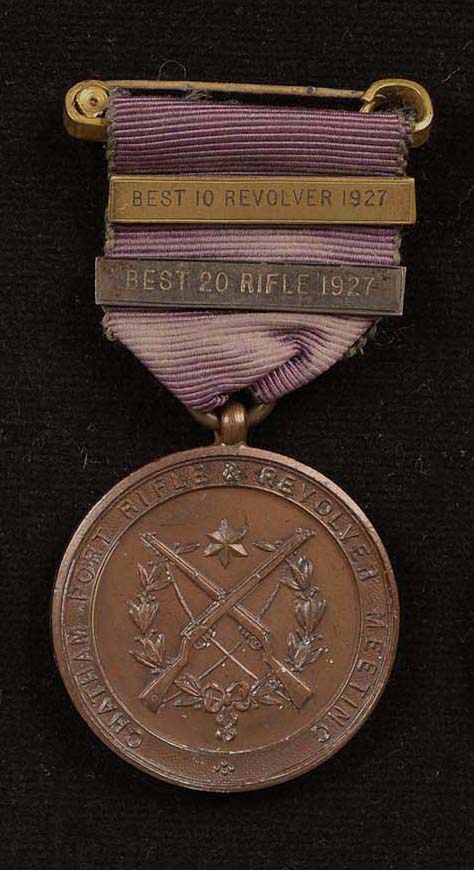
Bronze medal from Chatham Port Rifle and Revolver Club Meeting. 2 gold bars marked ’10 Best Revolver 1927′ and ‘Best 20 Rifle 1927.’
Silver Shooting Medal
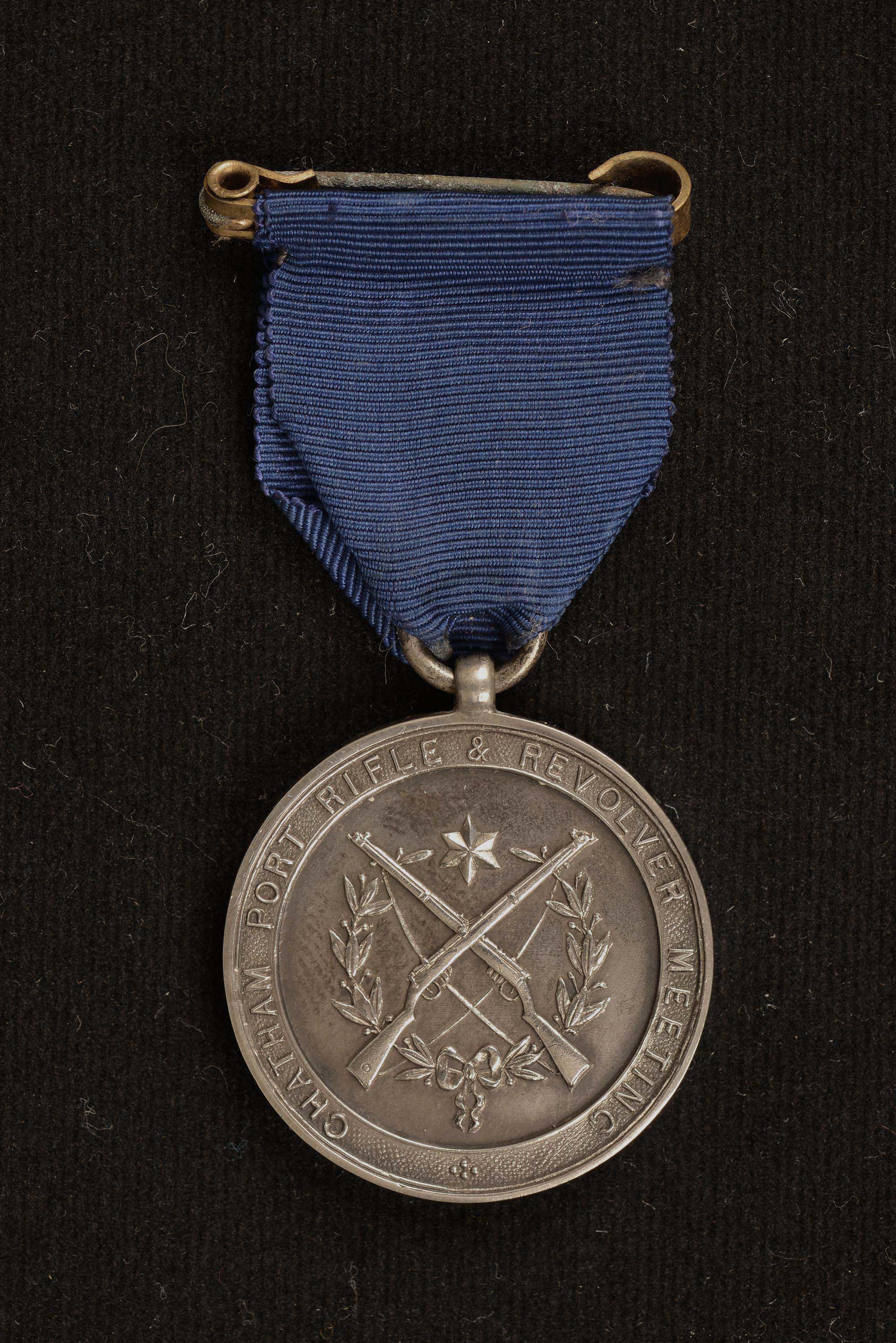
Silver medal from Chatham Port Rifle and Revolver Club Meeting.


